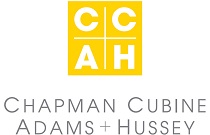
|
Part 1: Mapping Your Mix -- Is Your Nonprofit Providing the Right Mix of Content?
|
|
Posted by Guest Blogger at Dec 23, 2013 07:02 AM CST
|
This article was written by guest author Laura Quinn, founder and executive director of Idealware, a nonprofit that helps other nonprofits make smart decisions about software. For more information about your organization’s communications mix, download Idealware’s free Practical Guide to Integrated Communications, which provides a series of workbooks to walk you step-by-step through the process of integrating all your channels into cohesive messaging. This article originally ran in NTEN:Change.
 Odds are good that your organization is using multiple communications channels to reach people, from social media to direct mail and email to websites and blogs. Because each can attract a different audience, and may be better-suited for certain types and lengths of content, coordinating among them all can be difficult. You want to provide useful, interesting, mission-related information to use each channel successfully and meet the expectations of the people who follow you—but how do you keep each channel different enough to be interesting on its own without turning content-creation into a full-time job?
Odds are good that your organization is using multiple communications channels to reach people, from social media to direct mail and email to websites and blogs. Because each can attract a different audience, and may be better-suited for certain types and lengths of content, coordinating among them all can be difficult. You want to provide useful, interesting, mission-related information to use each channel successfully and meet the expectations of the people who follow you—but how do you keep each channel different enough to be interesting on its own without turning content-creation into a full-time job?
Last year, we surveyed readers of the NTEN: Change journal, published quarterly by the Nonprofit Technology Network, about their own balance of content types across their different communications channels and learned that organizations are using an average of almost four different channels as part of their communications mix.
Using each to its fullest potential takes work—it’s time-consuming to write a lot of new content for your blog, but it starts to feel redundant if you post the same information there as on your Facebook page or Twitter feed. A little forethought can help you maintain the balance of information you’re posting, or feel you should be, and ultimately save time. To start sharing your content-related efforts among each of your channels requires strategic thinking in four areas: Creating, Curating, Promoting, and Community-Building. Let’s look at them one at a time.
Creating
Are you creating new, original, informational content for each channel you’re using? You may not have to. People frequently write news stories or opinion pieces for some channels, like their websites, email newsletters, or blogs, while using others to share reposts, links, or other means of “re-using” content. Original content is what many organizations think about first when looking for high-quality ways to communicate with their constituents, but it’s certainly not the only way.
Curating
Increasingly, organizations are talking about “curating” content as another way to provide a lot of value in communications. For many, this means following news, blogs, or other resources in your topic area and linking to particularly useful resources. Curating information created by other organizations and individuals is a useful way to bring other voices into your mix, but don’t forget you can also curate your own materials—for instance, you could use your mailed newsletter to summarize the best posts published to your own blog each month.
Promoting
Promoting your own campaigns, events, and fundraising appeals is an important part of your external communications. It can also be a substantial piece of channels like direct mail, which you may not be using very often. Don’t be shy about promoting your own cause—presumably, that’s why people are on your list to begin with. But since it’s never pleasant to correspond with someone who does nothing but continually ask you to do stuff, make sure you’re providing other value as well, either on the same channel or on different ones.
Community Building
The ability to engage your audience is one of the benefits of online communications. Inspiring them to respond to posts and to talk to each other and generally creating a sense of community for your cause can, and should, be an important part of your mix—particularly for social media channels. How do you go about this? Ask questions of readers, encourage them to post comments, and solicit their answers to questions posted by other readers. The extent to which you should devote efforts will vary among channels. You’re unlikely to create a lot of conversation through your direct mail program, for example, but it might very well be a focus for your Facebook page or blog strategy.


















